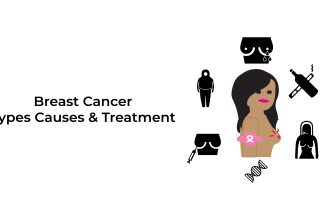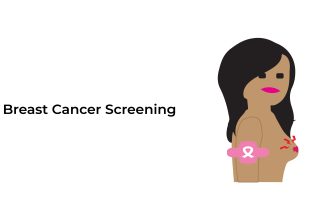Breast cancer is a disease in which a person’s breast tissues produce malignant cells that proliferate and affect other breast tissues. There are different stages in breast cancer based on the severity of the problem. Doctors use cancer staging to make things easier for patients and better understand their condition.
The more cancer has spread throughout the body, the more advanced it is. Cancer’s stage also determines treatment. Treatment is different in the precancerous stage and when cancer spreads throughout the body.
Breast cancer is divided into four stages. Although every patient with breast cancer has different symptoms and conditions, the treatment for the same stage is the same. There are various staging systems. In this article, we will discuss a staging system and how it works.
Types of staging systems
The breast cancer stage indicates how far cancer has spread throughout the breast. Staging determines the size of the cancerous tumor, the number of cancerous cells, and if the cancer has spread to the body. The causes of these growing malignant cells in the breast are also determined by staging.
Now the question is, how do doctors determine the stage? Staging is the process of evaluating the state of cancer through several testing. Doctors frequently perform staging tests before the treatment or surgery when cancer is diagnosed.
Staging determines potential dangers and the immediate treatment the patient requires. If malignant cells are causing severe damage to the breast tissues, the patient may require surgery. Doctors use different types of staging systems to determine the severity of cancer. The following are different staging systems.
- TNM staging system
- Numbering staging system
- Grades staging system
TNM is commonly used, so we will discuss the TNM system in this article.
TNM staging
Commonly doctors use the TNM system to determine the stage of breast cancer. Doctors also perform different testing methods. Testing can be done by clinical techniques like MRI, breast exam, tissue sampling, mammograms, etc., and it can be done by pathological methods.
Pathological staging is used to discover the cancer stage by removing tissue samples during surgery or biopsy. In TNM staging, T stands for tumor, N is for Nodes, and M for Metastasis. In tumor testing, doctors check the size of cancer, how fast it is growing, and what are the causes of tumors?
In Nodes testing, doctors examine whether cancerous cells are affecting lymph nodes or not and how severe the effect is. In Metastasis, doctors examine whether cancerous cells are spreading in the body or not. If they are spreading, how fast the growth is. After examining all these things, doctors determine the stage of breast cancer.
Following are detailed TNM staging system:
Tumor
When evaluating a tumor, the doctor establishes two things: the location of the tumor and its size in centimeters. The doctor also monitors the tumor’s progress and treats it accordingly. There are also sub-stages of T, N, and M. TX, T0, Tis, Tis (DCIS) are cancer diagnostic stages. TX and T0 are stages in which the patient’s breast does not grow malignant cells.
It is a stage in which precancerous cells grow in some breast tissues but do not spread to other tissues. This DCIS is early-stage cancer that can be treated and prevented from spreading to other breast tissues.
The tumor size is divided into stages; T1, T1mi, T1a, T1b, T1c, T2, T3, T4, T4a, T4b, T4c, and T4d. T1 to T1c ranges up to 20 mm. T2 ranges from 20 mm up to 50 mm. T3 is more significant than 50 mm. T4 and own-wards are grown into different organs of the body.
Node
Checking lymph nodes for malignant tumors is a procedure that involves examining the organ where cancerous cells usually begin to form. Lymph nodes can be found in every part of the body, but those in the underarms, collarbone, and breast bone are more susceptible to developing cancer.
NX, N0, N1, N2, and N3 are the stages in Nodes. The stage NX is when no testing is done to diagnose breast cancer. N0 is a precancerous stage in which there are either no malignant cells in the lymph nodes or a small number of cancerous cells that can be treated easily.
In the N1 stage, malignant cells spread to some extent in some lymph nodes, and tumors can grow up to 2 mm. Cancerous cells infect up to 9 axillary lymph nodes in Nodes N2, one step ahead of Nodes N1. N3 is a severe cancer stage in which cancers are migrated to several lymph nodes and other body areas, such as the collarbone.
Doctors propose treatments after examining all these stages because staging makes it easier for doctors to determine which sections of the body are damaged and how much treatment they require. Chemotherapy and hormone therapy, among other remedies, are utilized at various stages of breast cancer.
Metastasis
“distant metastasis” refers to how far cancer has spread across the body. It is a stage of cancer that is potentially deadly. MX, M0, M0 (i+), and M1 are the stages of Metastasis. MX indicates that the tumor has not spread to other body parts and hence does not require therapy.
M0 is a stage in which cancer has the potential to apply to different sections of the body, but there are no signs of cancer in those areas yet. M0 (i+) is a stage that indicates a very slight risk of cancer spreading to other organs. M1 is an advanced stage in which cancer has spread to other places of the body.
References
- https://www.cancerresearchuk.org/about-cancer/breast-cancer/stages-types-grades/about-breast-cancer-staging-grades
- https://www.cancer.net/cancer-types/ breast cancer stages
- https://amp.cancer.org/cancer/breast-cancer/understanding-a breast cancer diagnosis /stages-of-breast-cancer.html







